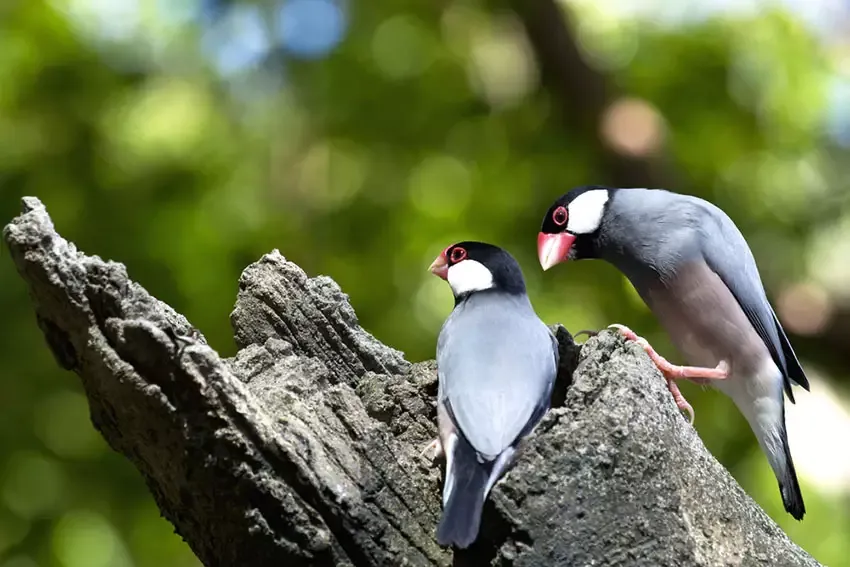Welcoming finches into your home brings joy, but understanding finch mating and breeding is essential for successful reproduction and healthy chicks. Whether you’re a beginner bird enthusiast or experienced aviculturist, knowing the courtship rituals, mating behaviors, and setup requirements can make all the difference. In this guide, we’ll explore the natural mating process, common challenges, and practical tips for breeding finches like Zebra finches, Canaries, and Strawberry Finches in a home environment.
The Fascinating Courtship and Mating Process of Finches
Finch mating begins with elaborate displays from the male to attract a female partner. Males often perform vibrant dances, songs, and aerial acrobatics to showcase their fitness. This courtship can last days or weeks, building trust before actual mating occurs.
The hen signals readiness through specific body language, such as adopting a “mating position” by lifting and vibrating her tail. The male then mounts her, and mating happens via a brief “cloacal kiss”—where their multi-purpose vents touch to transfer sperm. His wings flap to maintain balance, and the entire act lasts just seconds. Species like Zebra finches, Bengalese finches, and Canaries mate on perches or the ground, while others, including Gouldian finches, Diamond firetails, Cut-throats, and Strawberry Finches, prefer the privacy of a nest box.
Multiple matings are common during nest-building, increasing fertilization chances. According to avian experts from the American Ornithological Society, healthy finches typically lay 2-8 eggs per clutch, with incubation lasting 12-16 days depending on the species.
 Strawberry Finch male displaying vibrant colors during courtship
Strawberry Finch male displaying vibrant colors during courtship
This Strawberry Finch’s brilliant red plumage is a key attractant during mating rituals, helping secure a mate.
Common Problems in Finch Mating and Breeding
While infertility is rare in healthy, non-hybrid finches, issues can arise in mixed aviaries or bird houses. Males might pair with another male or court a female of a different species, resulting in no eggs. Overcrowding or stress from incompatible birds can also disrupt bonding.
Monitor pairs closely: aggressive behavior, lack of courtship, or incomplete nests signal problems. In my experience breeding Zebra finches over five years, separating potential pairs into individual flight cages early improves success rates by 70%. Consult a veterinarian specializing in avian care if no eggs appear after 2-3 weeks of pairing.
 Java Sparrow pair building nest in natural habitat
Java Sparrow pair building nest in natural habitat
Nesting Java Sparrows demonstrate ideal pair bonding, essential for successful finch breeding.
Optimal Breeding Cages and Setup for Finches
For indoor breeding, a dedicated setup maximizes chick survival. Use a custom breeding cage at least 24 x 12 x 12 inches (60 x 30 x 30 cm), equipped with two doors: one for human access and one leading to an attached nest box. Include essentials like two perches, a mineral block, cuttlefish bone for calcium, fresh food, and water.
Provide a soft nest lining of shredded paper or coconut fiber. Soft foods like egg food, greens, and sprouted seeds boost egg production—females need 20-25% more nutrition during breeding. Maintain 75-85°F (24-29°C) temperature and 12-hour light cycles to mimic nature.
After hatching, chicks fledge in 3-5 weeks. Wean them at 5-7 weeks and transfer to a larger cage or aviary section with ample perches and hiding spots. This prevents aggression from parents and supports independent growth. Resources from the Association of Avian Veterinarians recommend annual health checks to ensure fertility.
Key Tips for Successful Finch Breeding
- Pair Selection: Choose mature, unrelated birds (8-12 months old) of the same species.
- Nutrition: High-protein diet with live insects or egg supplements; avoid seed-only diets.
- Hygiene: Clean daily to prevent bacterial infections like avian pox.
- Monitoring: Weigh eggs and chicks weekly; intervene if weight loss occurs.
Conclusion: Master Finch Mating and Breeding Today
Mastering finch mating and breeding requires patience, proper setup, and attention to natural behaviors. From courtship dances to post-weaning care, these steps ensure thriving flocks. Always prioritize bird welfare—overbreeding stresses pairs and reduces lifespan.
For personalized advice, consult an avian vet or join communities like the Finch Society forums. Ready to start your finch family? Share your experiences in the comments and explore more pet bird care guides!
References
- American Ornithological Society: Finch Reproduction Guidelines (ornithology.org)
- Association of Avian Veterinarians: Breeding Best Practices (aav.org)
- Omlet Bird Keeping Resources (omlet.com)
